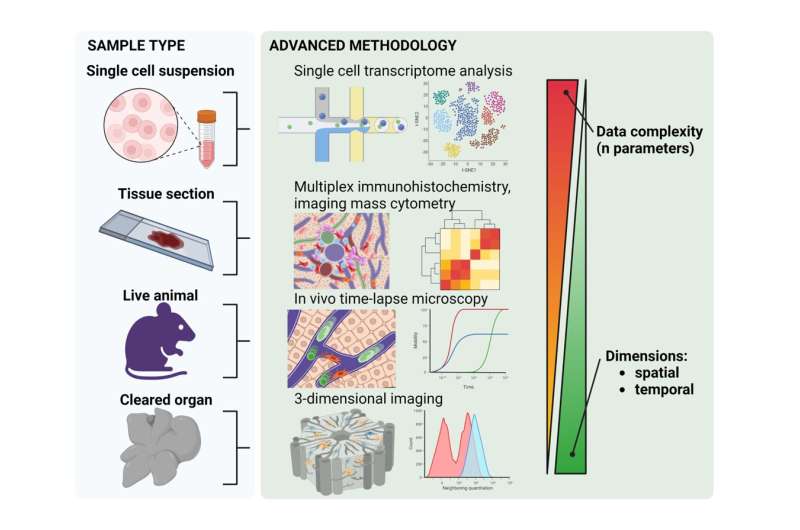This article has been reviewed according to Science X's editorial process and policies. Editors have highlighted the following attributes while ensuring the content's credibility:
fact-checked
proofread
Spatial dimension of macrophage heterogeneity in liver diseases

The hepatic immune landscape is a dynamic compartment, notably composed of highly heterogeneous and adapting myeloid cells. Liver resident macrophage distribution across the tissue and bone-marrow derived monocyte accumulation dramatically change depending on the pathological status of the organ. This review summarizes recent findings deciphering the relevance of liver macrophage spatial localization as a phenotypical marker and functional contributor to liver diseases.
This review manuscript highlights the relevance of spatially-resolved macrophage phenotyping in liver disease-related research.
The liver is a vital organ heavily populated with macrophages, which represent key players of the innate immune response but also hold key functions in the maintenance of a healthy organ. Liver macrophages are mostly distributed across two populations of different origins and functions during homeostasis and disease: liver resident macrophages (referred to as Kupffer cells, KCs), and monocytic macrophages derived from the bone-marrow (MoMFs).
The KC: MoMF ratio, as well as their respective spatial distribution through the liver, are increasingly recognized as liver disease progression hallmarks. These phenomena are observed in a wide variety of liver diseases ranging from non-alcoholic fatty liver disease to biliary tree disorders (cholangiopathies).
Recent single cell analyses revealed previously underestimated heterogeneities within those two major populations. These studies were rendered possible by recent technological breakthroughs in transcriptomics, proteomics and bioinformatics, particularly in single cell RNA sequencing and multiplex immunostaining. Nowadays, the map of the liver macrophage landscape is being refined to include this phenotypical and functional heterogeneity, in a 2- and 3-dimensional resolved manner.
The most striking changes occurring at later stages of liver disease include a depletion in KCs and an accumulation of MoMFs with a strong pro-inflammatory phenotype and poor phagocytosis capacities in perilobular fibrotic areas, while lipid-associated macrophages are observed in steatotic areas during fatty liver disease.
The research is published in the journal eGastroenterology.
More information: Adrien Guillot et al, Spatial dimension of macrophage heterogeneity in liver diseases, eGastroenterology (2023). DOI: 10.1136/egastro-2023-000003




















